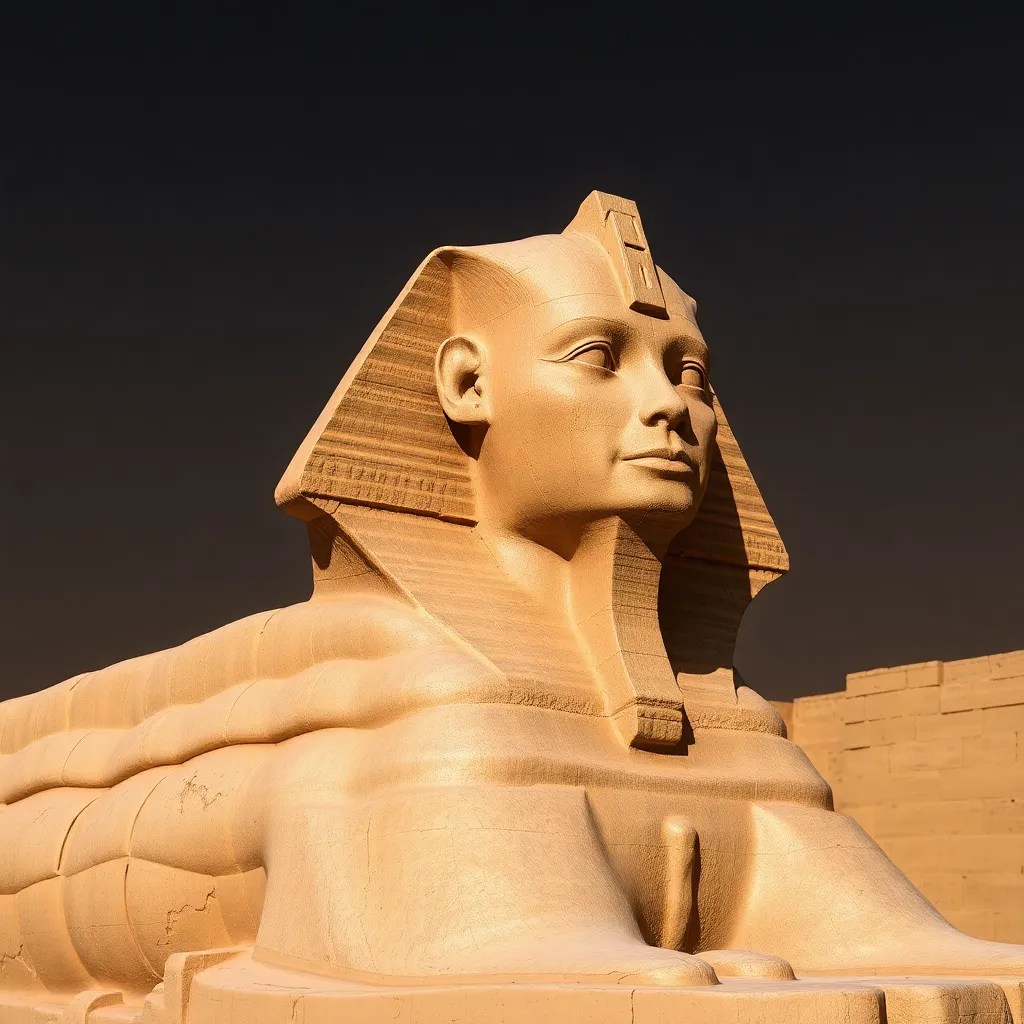The Sphinx: A Guardian of the Sacred
I. Introduction
The Great Sphinx of Giza stands as one of the most iconic symbols of ancient Egypt, captivating the imagination of people around the world. This monumental statue, with its lion’s body and human head, embodies the fusion of strength and wisdom, representing the ideals of ancient Egyptian culture.
In ancient Egyptian mythology, the Sphinx held great importance, serving not only as a monument but also as a guardian of sacred spaces. This article aims to explore the multifaceted role of the Sphinx as a protector, a figure steeped in mythology, and a symbol of ancient beliefs.
II. Historical Context of the Sphinx
The Sphinx was constructed during the reign of Pharaoh Khafre, around 2500 BCE, making it one of the oldest and largest statues in the world. It is believed that Khafre commissioned the Sphinx to guard his pyramid and to serve as a symbol of his power and divinity.
In ancient Egyptian mythology, the Sphinx is associated with the sun god Ra, further emphasizing its significance. The statue’s placement on the Giza Plateau, near the Pyramids of Giza, highlights its connection to the funerary landscape and the belief in the afterlife.
III. Architectural Features of the Sphinx
The Great Sphinx measures approximately 73 meters long and 20 meters high, making it an awe-inspiring structure. Its body, carved from limestone, features intricate details that showcase the craftsmanship of ancient Egyptian builders.
Key architectural features include:
- **Lion’s Body:** Symbolizes strength and power, representing the Pharaoh’s authority.
- **Human Head:** Typically believed to represent Khafre, indicating the divine nature of the Pharaoh.
The materials used in the construction of the Sphinx are primarily local limestone, which has weathered over the millennia, adding to its mystique. The symbolism of the lion’s body and human head conveys a complex message about the ruler’s connection to both the terrestrial and divine realms.
IV. Myths and Legends Surrounding the Sphinx
The Sphinx is steeped in ancient myths that contribute to its enigmatic presence. One of the most famous tales is that of the Greek Sphinx, which posed a riddle to travelers:
- **”What walks on four legs in the morning, two legs at noon, and three legs in the evening?”**
This riddle symbolizes the stages of human life and underscores the Sphinx’s role as a guardian of knowledge and wisdom. Additionally, various interpretations of the Sphinx can be found in different cultures, often representing a blend of human and animal characteristics that signify strength and intelligence.
V. The Sphinx as a Guardian Figure
As a guardian figure, the Sphinx played a crucial role in protecting sacred spaces, particularly the tombs of the Pharaohs. Its presence was meant to deter intruders and safeguard the sanctity of the burial sites.
In ancient Egyptian belief, the Sphinx was connected to funerary practices and the afterlife. It symbolized the transition from the earthly realm to the afterlife, ensuring that the Pharaoh could journey safely into the next world.
The symbolism of guardianship in ancient Egyptian religion was vital, as it represented the protection of not only physical spaces but also spiritual dimensions. The Sphinx’s vigil over the Giza Plateau illustrates this protective role, embodying the link between the living and the divine.
VI. Archaeological Discoveries and Research
Over the years, major archaeological findings related to the Sphinx have shed light on its history and significance. Excavations have revealed various artifacts and inscriptions that provide insight into the construction techniques and cultural context of the time.
Ongoing research and restoration efforts continue to enhance our understanding of this ancient monument. Modern technology, such as ground-penetrating radar, has been employed to uncover hidden structures and features around the Sphinx, revealing more about its original landscape.
The impact of these discoveries on our understanding of ancient Egypt is profound, allowing historians and archaeologists to piece together the cultural and religious practices that defined this civilization.
VII. The Sphinx in Modern Culture
The Sphinx’s influence extends far beyond ancient Egypt, finding representation in various forms of art and literature. Its majestic presence has inspired countless artists, writers, and filmmakers, becoming a symbol of mystery and allure.
Contemporary interpretations of the Sphinx often draw on its rich symbolism, exploring themes of guardianship, wisdom, and the duality of human and animal nature. Additionally, the Sphinx plays a significant role in tourism, attracting millions of visitors each year who seek to connect with the ancient world.
VIII. Conclusion
In conclusion, the Sphinx stands as a timeless guardian of the sacred, embodying the ideals and beliefs of ancient Egyptian culture. Its significance as a protector of tombs and sacred sites highlights its role in the religious and cultural practices of the time.
The enduring legacy of the Sphinx continues to fascinate and inspire, reminding us of the complexities of ancient civilizations and their beliefs. As we reflect on the importance of preserving this ancient monument, we acknowledge its role in connecting us to our shared human history.




